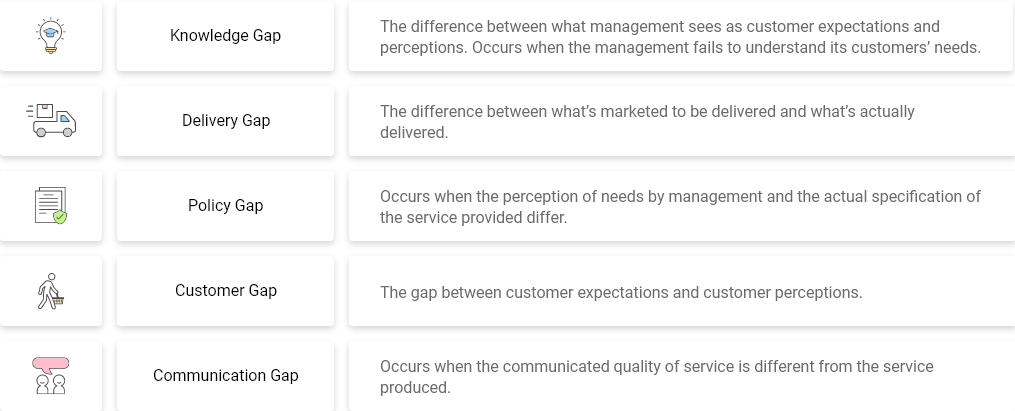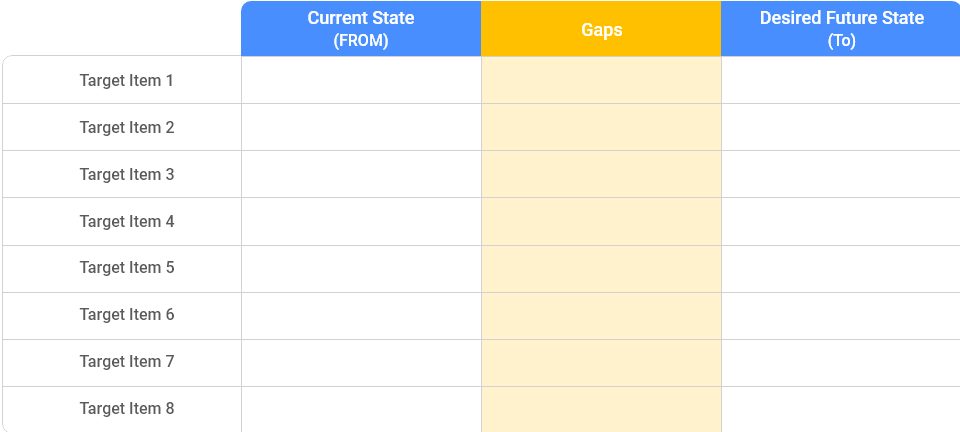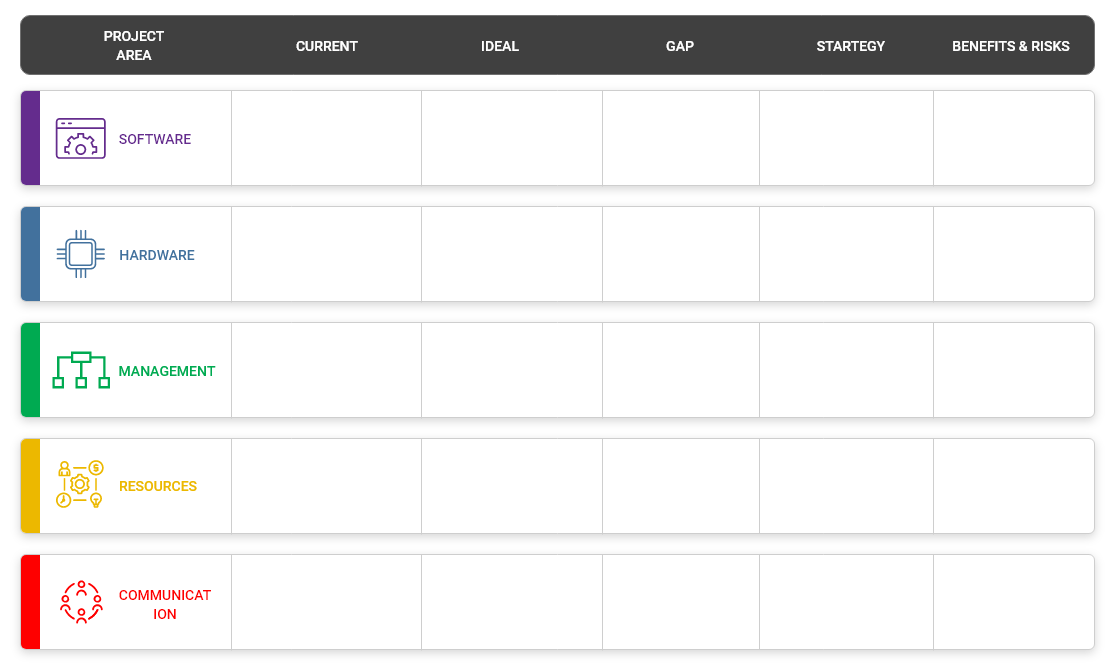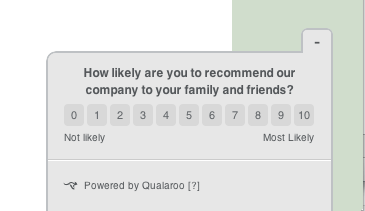
Only in a utopian world would a business flourish without differences in where they are and where they want to be, what they envision to deliver, and what customers are actually delivered.
Unfortunately, that’s not the reality. There are many internal and external factors at play that affect a company’s performance and create gaps between where a company stands in comparison to what it wants to achieve at a specific point in time.
That leaves us with only one solution to save the day — Identify the gaps and stop them from expanding further.
That’s where gap analysis plays a life-saving role in organizations.
In this post, we’ll cover what it is, its types, why you need to do it, when you need to do it, how to do it, and more. Stick to the end to know the types of gap analysis templates you can use to patch the gap in your business.
Let’s begin.
What is a Gap Analysis?
It is a business strategy planning tool used by all companies to compare their current business standing vs. the standard service quality.
Why is it performed?
The purpose of gap analysis is to evaluate where they are now and how far they are from where they want to be, along with how they will cover this distance.
When is it performed?
The analysis is generally performed during the transition or implementation of a management system to compare it to the standard. It is the reason why gap analysis can also be referred to as Pre-Audit.
Another reason why you might need to perform it is because of certain shortcomings in the performance and results. These shortcomings may be from your sales team, customer support personnel, quality assurance, product development, and so on.
Even individuals such as proactive leaders can perform it to improve their performance.
One analysis that’s very popular and worth looking into is the gap analysis model for customer service. Here’s how it looks in brief.
Gap Analysis Model for Customer Service
Besides the service quality, such analysis is effectively applicable for the management of customer satisfaction. It’s a great way to gauge the distance between what customers expect and what’s delivered to them.
The tool SERVQUAL developed by Berry, Parasuraman, and Zeithaml is based on the model they developed.
The two primary purposes of the tool are to:
- explore gaps between customer expectations and perceptions
- improve overall customer satisfaction
There are five identified gaps in customer service quality. They are:
- The Knowledge Gap
- The Delivery Gap
- The Policy Gap
- The Customer Gap
- The Communication Gap

Benefits of Gap Analysis: Why It Matters
With a clear understanding of what the analysis entails, it becomes apparent why organizations use this model to growth-hack their business. Here’s a look at why gap analysis is useful in detail for you to clearly understand why you should conduct it for your business.
Increased Productivity = Increased Profits
Gap analysis helps identify gaps in employees’ performance, productivity, the efficiency of processes, etc. If a company knows what to improve at the right time, it can help make processes more efficient and increase productivity, which will positively impact your revenue.
Helps Identify and Improve Weakness
It lets you analyze the efficiency of your project without having to wait until it’s completed. It focuses on the situation today, identifies the gaps that may come in the future, and takes a proactive approach in making sure all the obstacles can be solved.
Efficiently Reallocate Resources
The analysis also helps companies review their current resource allocation practices. It allows you to identify misallocated resources and how the lack of some resources affects the business and revise the allocation.
Help Make Informed Decisions
When the management is aware of a business’s current situations and position, it removes the risk of making an uninformed decision. With awareness through the analysis, making informed business decisions becomes easy.
It can be something like creation of a buyer persona by collecting information from prospects and existing customers to understand who the buyers are and what they want.
It can even be something like creating a customer journey map to find out how customers interact with your business and how to improve their experience at every touchpoint.
Discover how a logistics company used the Qualaroo feedback survey tool as part of their gap analysis strategy to identify what users need in certain locations so the company can improvise accordingly.
Case Study: Lalamove
As the company rapidly expands, there’s always a need to know where to go and what to do. One of the survey questions asked by the company is related to how customers find out about their business. Based on that, the company designs its launch strategies factoring in the demographics and city information.

They also use the tool to know which features garner more favors from users and which do not.
Learn how Lalamove made high-impact product decisions using customer feedback loops.
The Right Time to Perform Gap Analysis
So far, we know why conducting this analysis is seen as crucial for businesses and has become a popular practice among many industries.
Before we discuss how to conduct gap analysis, we are still left wondering when one should do it. So, let’s get it out of the way first.
Here are a few scenarios that ask for an effective gap analysis to improve business performance. Some of the examples are industry-specific to give you a better idea.
- When You Want to Benchmark Performance
You can perform it when you want to compare results with external criteria such as competitors.
- When the Profits Do Not Reach a Set Mark
It can help identify the factors that led to lower profits than the forecast percentage. Once you know what went wrong, i.e., if you spend more on specific resources than needed or incur unanticipated expenses, it’s easier to fix and bridge the gap for the future.
- When You Want to Perform Portfolio Analysis
You can use gap analysis to identify new product opportunities and also review the performance and relevance of existing ones.
If you think there’s a market for a specific product type, you can start the development process, but if you think a product isn’t popular, you can put it on sale or remove it from the portfolio.
- When You Want to Identify Usage Gaps
The difference between your potential market size and actual market size in known s usage gap. Implementing gap analysis helps companies realize that the usage gap exists and its reasons; for example, management may have misread demand for certain products and then find ways to overcome it.
- When You Want to Review Supply Management
Companies or institutions such as hospitals can conduct a gap analysis to know when they are short on supplies or if the process needs to be reviewed
- When You Want to Perform an Individual Analysis
With gap assessment, teams can perform an individual assessment to improve their performance and even explore best practices in the process.
Types of Gap Analyses To Perform For Your Business
There are multiple types of gap analyses businesses perform to improve their business processes and performance. They are as follows:

Manpower Gap Analysis
As the name suggests, this type of analysis focuses on the gap between the ideal manpower required and the one a business currently has. This way, if a company is low on the workforce, i.e., understaffed, it can go on a hiring drive and vice versa if the case is opposite.
Performance Gap Analysis
Also known as strategic gap analysis, it is concerned with the difference in expected performance and the achieved results. So, if specific goals are not met, performance gap analysis from different perspectives will prove effective.
Profit Gap Analysis
As the name suggests, profit gap analysis helps assess the difference between the anticipated profit percentage and the achieved results.
Market Gap Analysis
Also known as product gap analysis, the analysis focuses on analyzing the position of a company in the marketplace to evaluate the gap between current and budgeted sales.
Skills Gap Analysis
As suggested by the name, this type of gap analysis evaluates the skills and capabilities of the staff and employees. If the staff is not performing at the top of their potential, a company can conduct workshops and training sessions to increase productivity and skills.
IT Gap Analysis
Companies perform this gap analysis to evaluate and assess their current IT resources and what areas need more upgradation. For example, which processes can be digitized or simplified using different software.
One example can be a better alternative to human customer support – live chat support that’s available 24×7 and costs less and is more effective.
How to Conduct Gap Analysis Effectively: Steps to Follow
Since every industry works differently, the process or steps involved in performing analysis also differ. Irrespective of it, there are some basic steps that are crucial. So, let’s
discover how to do gap analysis of your business efficiently.
Step 1: Examining the Current State of Your Company
The first step in the gap analysis process is to establish the area you want to analyze; is it the customer experience? Performance of customer support? Annual sales? Marketing strategies?
There are so many areas for which you can perform your analysis; you just need to start somewhere.
So, understand your priorities and pick any one of them. For instance, say you want to improve the overall customer experience.
Here, you need to start with finding how your customer support is currently performing, how the customers perceive your product or service, what kind of experience your website visitors or app users have.
For this, you need to get close and personal with your customers. Collect their feedback using online pop-up surveys that help you ask customers without hampering their experience (We’ll discuss the tools for gap analysis later in the article).
So, all in all, this step involves identifying the obstacles or shortcomings in your businesses’ process and getting to their root cause.
Analyze all activities related to the area of your observation, i.e., whatever you are currently doing to see if they work or you need to change your game. Here’s an example:
| Current Scenario | Future State | Next/Proposed Actions |
| Sales profit margins at an average of 20% | Margins to average at 30% |
Step 2: What the Future Ideal State Looks like for You
Once you know the dynamics of the current situation and how your business functions, you can set realistic, promising goals that offer growth. When setting goals, you don’t have to reach for the sky yet; set multiple milestones that lead to your ultimate goal.
For instance, say you currently outsource your marketing. Upon closer inspection, you found out that it costs you more than having an in-house team to handle your content, designing, and marketing.
So, you found out the root cause in the previous step, set out a goal, i.e., want to shift marketing in-house for better results and efficiency. Now, on to the next step.
Step 3: Identify Gaps to Come up with Solutions
Now, when it comes to gaps, they are certainly not easy to identify, but since you have your problems and their causes all laid out in front of you, it would become a little easier. You can brainstorm to choose the best solutions to bridge the gaps.
For instance, take the example from step 1. Say, to improve the overall customer experience, you took customer feedback and found out that they are not happy with your customer support.
Upon closer inspection, you found that the CRM you use does not correctly show tickets or that you need to review the staff or maybe rehire.
Based on the problem and the gap it has created in your expectations and reality, you can choose any solution that meets your requirements based on many factors such as costs, resources it requires, and your organizational priorities.
It may even be something as simple as choosing a better customer relationship management tool.
Step 4: Implement Your Solution
With everything figured out, all there is left to do in the gap analysis process is to properly implement your solution. You can re-perform the analysis to see if your solution is working or if you need to take a new approach.
Techniques to Apply While Performing Gap Analysis
Now that you know the correct steps to perform the analysis, it’s only natural to wonder what methods you can apply to perform this analysis. Below are the most popular gap analysis techniques used to conduct the analysis successfully.
SWOT Analysis
SWOT is an acronym that refers to:
S: Strengths
W: Weakness
O: Opportunities
T: Threats
It is one of the most popular and tried and tested gap analysis techniques in the books that benefit in multiple ways. It helps you gather both quantitative and qualitative insights, including internal and external threats to an organization.
It also helps judge an organization based on how well it stands against its competitors. So, now the question is – how do you perform SWOT analysis? Here’s a brief account of the whole process:
- Create a team of niche experts from all departments.
- Design your customized SWOT analysis matrix.
- Map out your strengths as well as weaknesses, opportunities, and threats from external factors or forces.
- Organize these points based on long-term priority.
- Now, brainstorm with the team for ways to utilize your strengths and improve your weaknesses.
Fishbone Diagram
Also known as Ishikawa, cause-and-effect, or herringbone diagrams, the fishbone diagram is named after the structure the framework makes. It contains six Ms:
- Man
- Machine
- Method
- Material
- Measurement
- Mother Nature
The purpose of this diagram is to get to the root cause of any problem an organization may be currently facing. You can choose the categories central to your issues and identify where you need to improve.
Nadler-Tushman Model
This model helps in identifying how one aspect of an organization’s process affects other areas. The model aims at discovering processes that affect the overall efficiency of the company.
For example, you may have an excellent work culture, but if the company’s structure is unclear, you won’t get optimized results.
PEST Analysis
Along the same lines of SWOT analysis is the PESTLE analysis. The acronym stands for:
P: Political
E: Economic
S: Sociological
T: Technological
L: Legal
E: Environmental
This method helps take a proactive approach to identify threats and nip them in the bud, along with utilizing opportunities along the way. It does so by evaluating the factors mentioned above.
PESTLE analysis assists in identifying and closing gaps due to current issues and minimizes future risks for organizations. If you want to use a shorter version of this method, you should just try PEST.
Gap Analysis Frameworks and Tools to Use
Besides the methods we discussed above, here are some gap analysis tools and frameworks you can use.
Qualaroo
Qualaroo feedback software is a helpful gap analysis tool. It helps you create custom surveys that you can add to your website, mobile app, and prototype and ask your customers for feedback to evaluate their satisfaction level and expectations.
Its AI-powered gap reporting feature works intuitively to produce results that can be turned into actionable insights.
McKinsey 7S Framework
McKinsey 7S framework was developed by a consulting company that goes by the same name. The framework aims to explore if an organization is meeting its customers’ expectations.
The framework consists of seven 7s, as shown in the figure above. It evaluates which factors crossover and how they may affect each other.
Microsoft Power BI
Microsoft’s Power BI is a cloud technology that allows businesses to gather customer insights. You can conduct analysis with this tool for customer service and discover where you are as a company. It has features like built-in AI functionalities, data visualization, custom data connectors, and many more.
HubSpot
HubSpot is a marketing, sales, customer support automation tool that helps perform analysis with features like knowledge base, data quality automation, and analytics. You can also run inbound marketing campaigns using advanced CRM features.
Examples of Efficient Gap Analysis
Organizations from different industries conduct such analysis in a way suitable for them. So, to increase your understanding of the whole process and how it looks for different industries, here are a few gap analysis examples to consider.
Example 1: Information Technology
IT gap analysis is generally conducted by project managers and process improvement teams in the Information technology industry. It is treated as a starting point for action plans that lead to operational improvements.
It allows these teams to benchmark the current performance and measure them against ideal performance milestones.
Example 2: Real Estate
In real estate, gap analysis helps measure current annual sales, based on which companies can set SMART goals. The analysis also helps find out the hiccups that hinder the company from achieving its goals.
For example, a real estate company has set a goal to increase sales by 15%, and they start assessing the business’s current standing with gap analysis. Soon, they find out they need to connect more with the customers to truly understand what the potential customers need from the company.
Example 3: Compliance Initiatives
Gap analysis in compliance initiatives compares what is needed by specific regulations and what methods are used by the company to adhere to them.
Example 4: Human Resources
Skills required for specific job positions are ever-evolving. For this, human resources conduct an analysis to evaluate what skills the personnel currently possess and what skills they should acquire. It helps the HR teams organize suitable webinars and arrange courses to take and build up the relevant skills.
Example 5: SEO Gap Analysis To Boost Visibility
Ranking high on Google searches brings a lot of opportunities and prospects to small businesses. Of course, it’s only possible when the SEO strategy of the business is working.
A simple analysis will give small businesses insights into what they can improve upon to see better results and rank higher in the searches.
{Read more: The Ultimate Guide to SEO for UX Designers}
Gap Analysis Templates To Get You Started
Here are a few gap assessment templates that may help you kickstart your analysis. You can, of course, customize the templates whichever way it works for your company.
Template 1

Template 2


With everything covered, we hope you can push your limits, identify your shortcomings, and create solutions that actually work.
With analysis that consists of listening to your customers, identifying where they are not satisfied, and then closing the gap with perfect solutions, you can achieve whatever goal you set.
Still, as Ryan Lilly, the author of Write Like No One’s Reading, says “The focus of gap analysis should be getting to the other side. If you bend over to analyze a gap too long, you’ll probably fall into it.”
So, do what’s needed and don’t spend too much time analyzing the gap so that you don’t have enough time to strategize new plans and implement them.
The best way to begin is by learning what your customers or key stakeholders in a process are thinking of and working with a good feedback tool can help you “bridge the gap” to achieve that.
FREE. All Features. FOREVER!
Try our Forever FREE account with all premium features!





